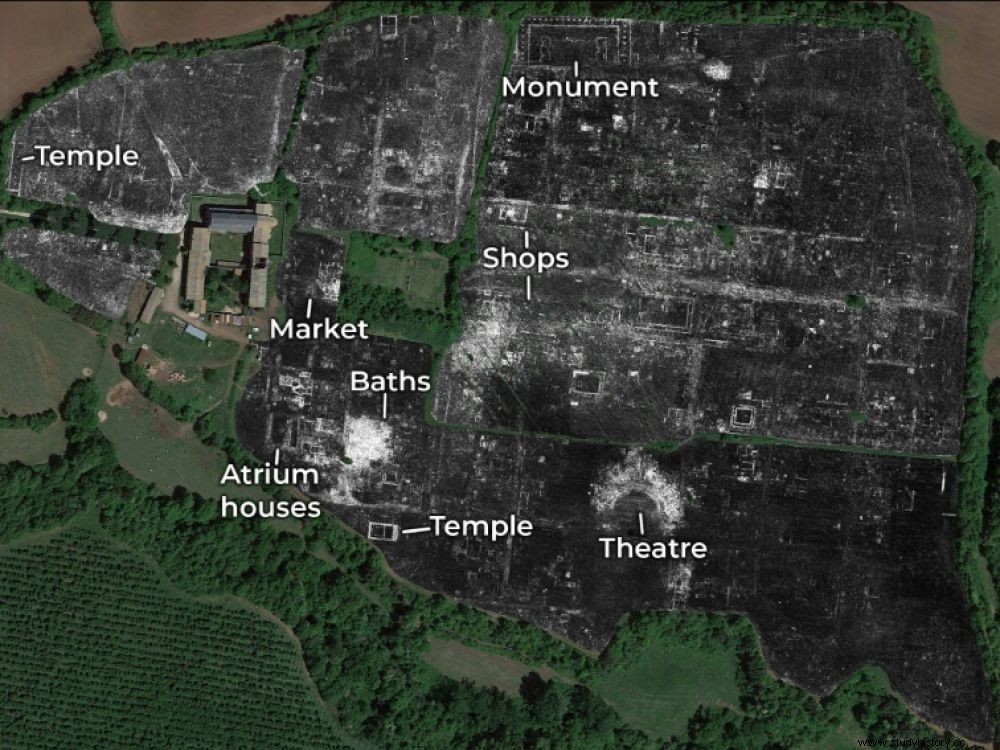The ancient city of Falerii Novi is located in Lazio, about fifty kilometers from Rome. His study reveals a surprising network of water circulation.

Undated photo released on June 4, 2020 by the University of Cambridge (United Kingdom) shows a mapping carried out with ground penetrating radar (GPR) of the ancient Roman city Falerii Novi, near Rome
Baths, a market, a temple and even an important network of water pipes... For the first time, researchers have accurately mapped an ancient Roman city without moving a single stone. To achieve this, a team of scientists from the University of Cambridge (Great Britain) and Ghent (Belgium), used ground penetrating radar (GPR) to probe the depths of the 30.5 hectares of Falerii Novi , flushing out buried details. "This is the first time this technology has been used to map an entire city", Martin Millett of the University of Cambridge, co-author of the study published Tuesday, June 9, 2020 in Antiquity, told AFP.
"A less standardized plan than in Pompeii"
Located in Lazio, about fifty kilometers from Rome, the Roman city was first occupied around 240 BC and remained so until 700 AD. 1990, it has already been the subject of excavations and studies. But the GPR allows researchers to probe different depths and in particular to see how the city has evolved over the centuries. According to the data obtained by the researchers, "the plan of Falerii Novi turns out to be much less standardized than that of many other Roman cities, such as Pompeii" , reports a press release from the University of Cambridge.
A surprising series of water pipes
And "the temple, the market building and the spa complex, discovered during this research are architecturally more elaborate than one would expect for a small town" . The researchers also discovered a surprising series of water pipes. Pipes run through much of Falerii Novi, even running under city blocks and not just along streets, as is more often the case. "The astonishing level of detail we have achieved at Falerii Novi, and the startling features that the GPR has revealed, suggest that this type of study could transform the way archaeologists investigate urban sites" , notes Martin Millett. But the work is nonetheless long-term:dissecting the enormous amount of data accumulated by the GPR can take several months.
